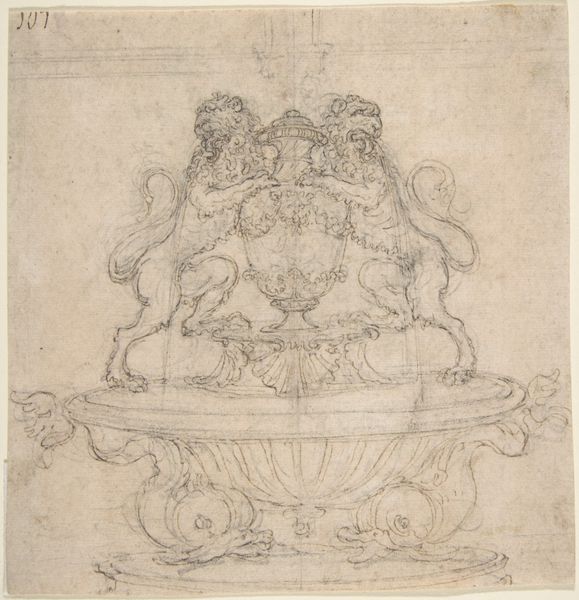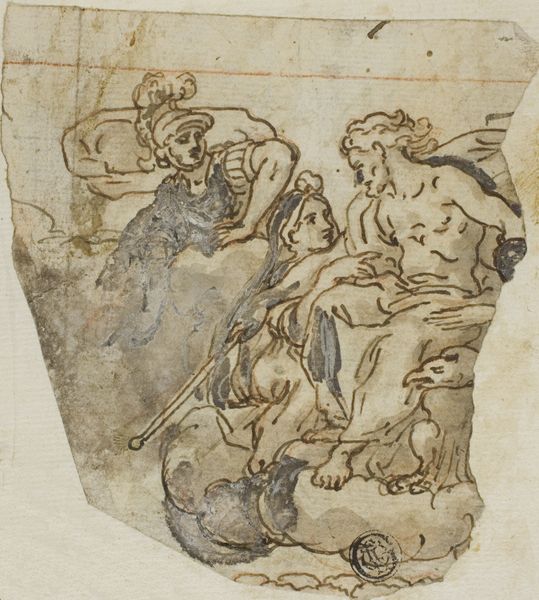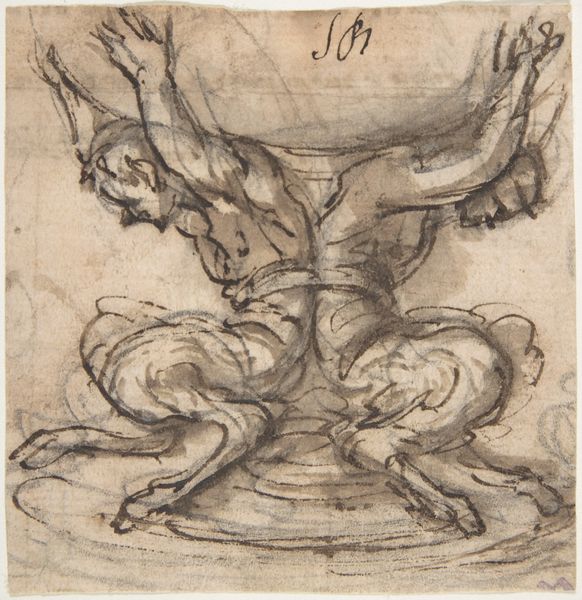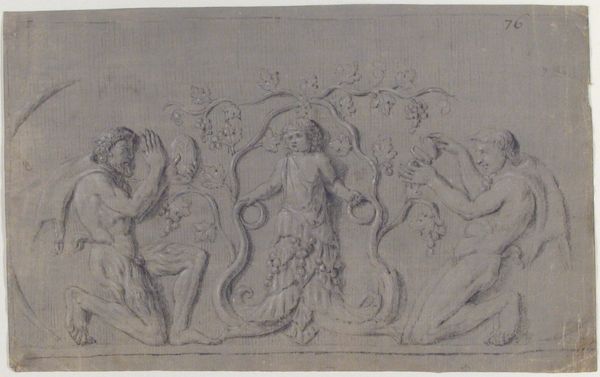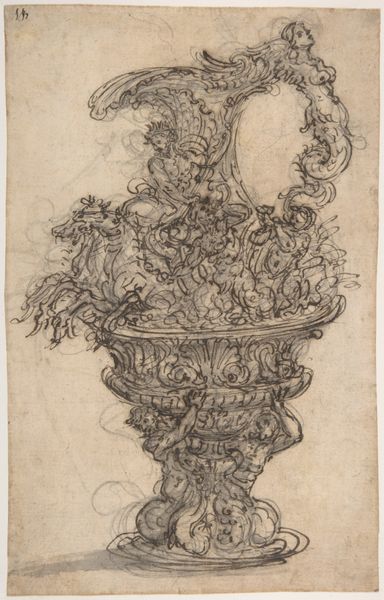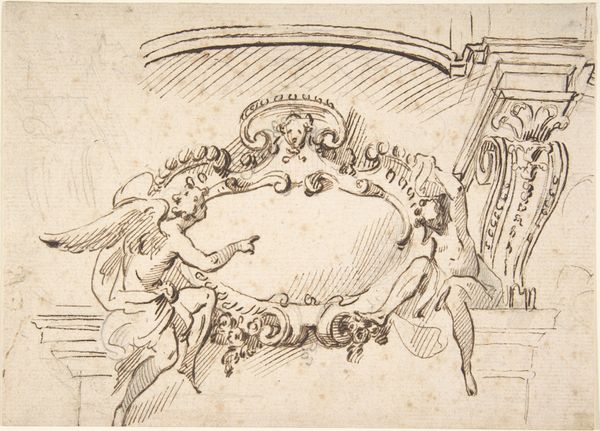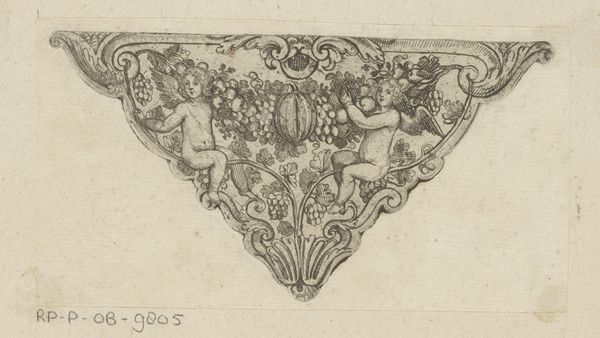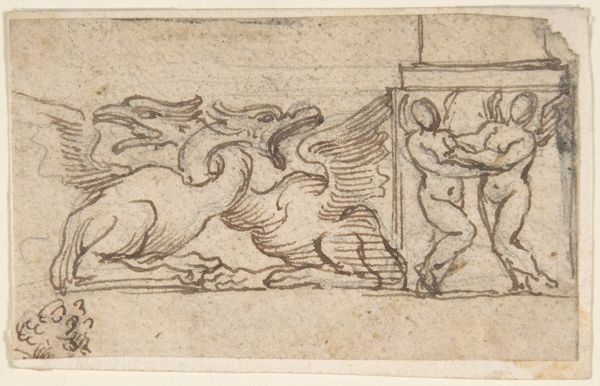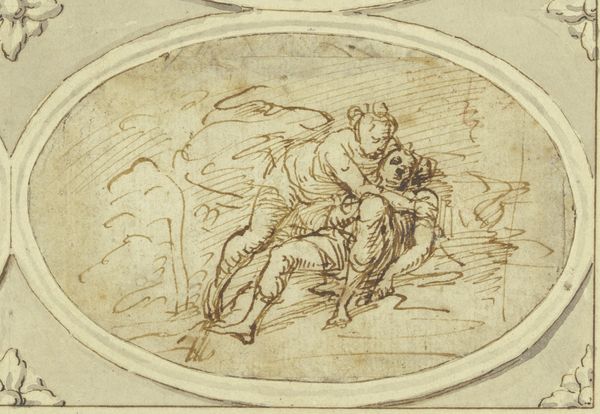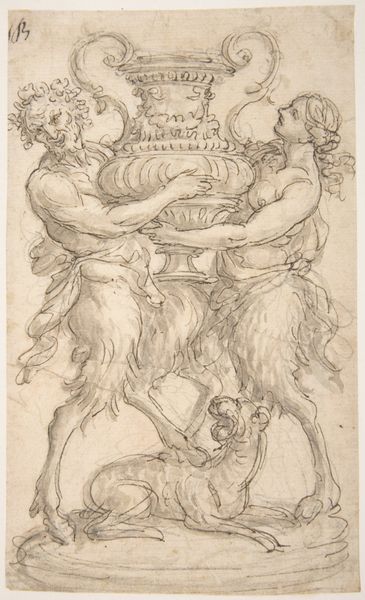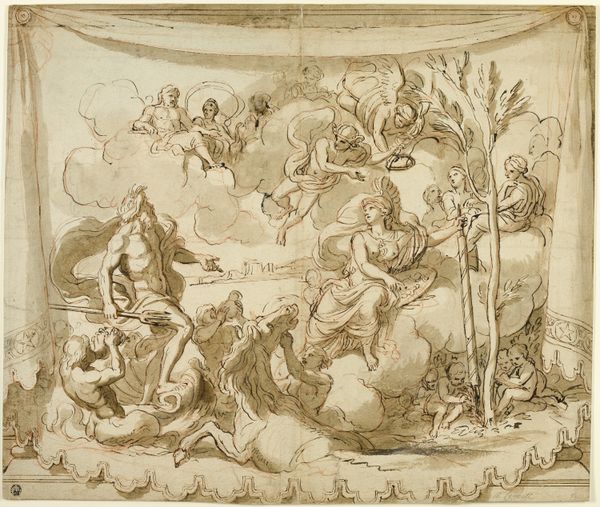
Table or Basin Supported by Male Sirens (recto); Sketch for the Same Subject (verso) . 1652 - 1725
0:00
0:00
drawing, carving
#
drawing
#
carving
#
figuration
#
11_renaissance
#
italian-renaissance
Dimensions: sheet: 3 5/16 x 4 in. (8.4 x 10.2 cm)
Copyright: Public Domain
Curator: Here we have a drawing by Giovanni Battista Foggini, dating approximately from 1652 to 1725. It's entitled "Table or Basin Supported by Male Sirens (recto); Sketch for the Same Subject (verso)." The piece is currently held in the collection of the Metropolitan Museum of Art. Editor: My initial reaction is that there is an endearing awkwardness about these figures, which seems so different from many depictions of mythological characters, which often veer into either perfect idealization or grotesque horror. Curator: Well, Foggini was a sculptor, primarily. This is likely a preliminary sketch for a larger piece, potentially a fountain or garden ornament. Italian Renaissance art saw an embrace of classical forms. You know, we see figures from mythology being put into service, quite literally here. It's not just about beauty, but about utility and status. Editor: They remind me of these little architectural supports you find that feel like they’re struggling a bit. And look at their expressions—a sort of cheerful determination mixed with, let's be honest, a bit of discomfort! Do you think the finished piece was intended to evoke sympathy, maybe even humor? It gives a touch of the absurd to classical grandeur, as if someone tripped on the way to godhood. Curator: Possibly, though, during the Renaissance, such displays often functioned as markers of wealth and erudition. The use of mythological figures signals an awareness of classical learning. Commissioning artists like Foggini, demonstrates both taste and, perhaps more importantly, the means to acquire such sophisticated artistry. But your view does allow for a contemporary read, perhaps undercutting that ostentatious quality. Editor: But there’s a universal connection point in the image, and for me that point lives outside the social status. In short—you see those sirens working hard. Curator: Right. Well, thinking about the function of art as both an indicator of social power and a generator of relatable feelings—is one of the great challenges when approaching works from the Italian Renaissance. Editor: Perhaps. For me it seems to signal that even semi-divine beings get backaches! Curator: Indeed. Food for thought, wouldn't you agree? Editor: Definitely! And it provides such a rich starting point from which we can explore so many paths of thought and creativity.
Comments
No comments
Be the first to comment and join the conversation on the ultimate creative platform.

